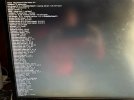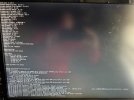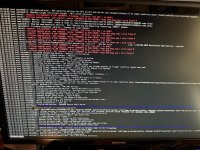Yesterday morning i lost connectivity to my PVE1 box that has 3 VM's on it. I orginally was able to ping my PVE .10 address and then during troubleshooting, i rebooted the server and lost all connectivty to the PVE host and any VM's.
I lost the vmbr0 interface in "IP address" output, but the ethernet adapter in the interfaces file looks correct. going thru the journalctl i found the below bus error in start networking. Not sure what happened at ~5am in the morning to cause this. It is on UPS power so not a power outage. I originally thought it was a bad ethernet port before i dug into the logs. So i swapped the drives into a second exact copy of the Beelink mini-PC. Same results.
I can force the enp171s0 interface up with the ip link command but connectity. I have not tried setting up a static address since I don't think the networking stack is fully functional. I also suspect a issue ifupdown2 module.
attached are screenshots of pveversion output, /etc/network/interfaces and IP address.
Any thoughts on how to fix this?
I lost the vmbr0 interface in "IP address" output, but the ethernet adapter in the interfaces file looks correct. going thru the journalctl i found the below bus error in start networking. Not sure what happened at ~5am in the morning to cause this. It is on UPS power so not a power outage. I originally thought it was a bad ethernet port before i dug into the logs. So i swapped the drives into a second exact copy of the Beelink mini-PC. Same results.
I can force the enp171s0 interface up with the ip link command but connectity. I have not tried setting up a static address since I don't think the networking stack is fully functional. I also suspect a issue ifupdown2 module.
attached are screenshots of pveversion output, /etc/network/interfaces and IP address.
Any thoughts on how to fix this?





